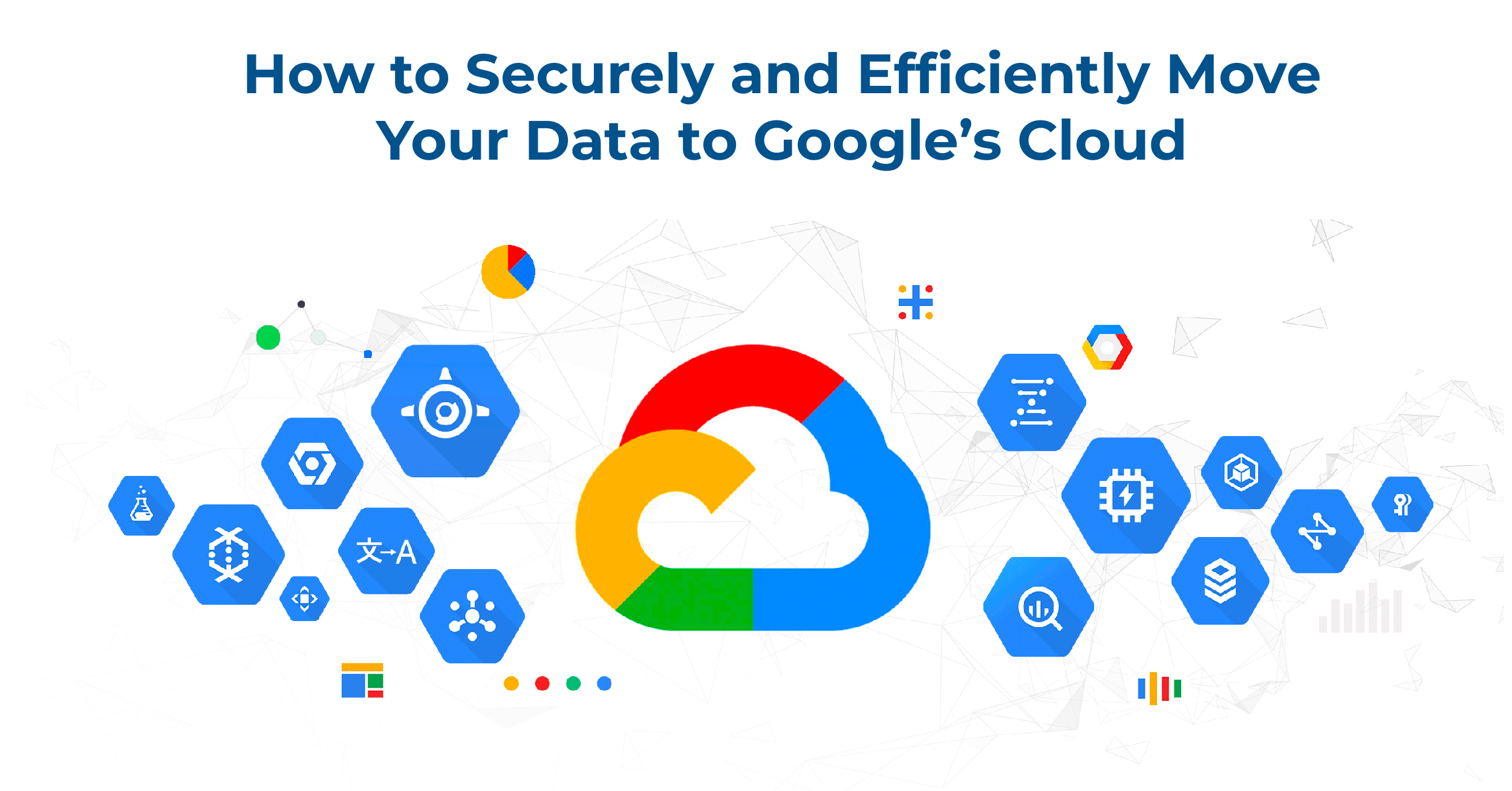Blog
How to Securely and Efficiently Move Your Data to Google’s Cloud
October 9, 2022
Posted by: DevDigital
Businesses migrate apps and databases to third-party clouds to save money or access capabilities that just are not available in their own corporate cloud environment. Regardless of using them or another cloud data service, you want to take some preparatory steps before making the move. Your prep work may lead you to conclude that you need to work with a Google Cloud Partner to help with the process. Regardless of whether this is an in-house project or something that is done with expert outside help, some of the preparation will be the same.
Preparation
Google breaks down the cloud migration process into four phases: assess, plan, deploy, and optimize. But you can also think of it in terms of preparation and execution too. Make sure you have a good reason for the move. Most cloud data migrations are from local servers to remote servers or from one cloud to another. The steps to prepare are similar in either case. The most important single question to ask is probably this: Why are we migrating our data?
When your business case for going to Google Cloud is solid, which means you have a satisfactory answer to that question, you are ready to assemble a team to handle the migration work. Some companies have a project manager and one or two IT people working with a Google Cloud Partner to manage the migration effort. Others have a large internal team, which should include a project manager and a cloud architect. Google Partners can help with the next steps.
You want to consider a few design decisions before starting. Are you doing a shallow or a deep migration? A shallow integration involves moving data from local databases to one or more drives on a cloud server. Deep integration moves data and application files and modifies them to take full advantage of cloud architecture.
Will this be a single-cloud move or multi-cloud move? A move to the cloud can involve moving data and apps to multiple vendors or to a single vendor, like Google or AWS (Amazon Web Services). A single-cloud move is simpler but locks you into whatever features and functionality that the provider offers. It would not be easy to switch from one cloud to another. Sometimes, you may have to run an app on one cloud while the data resides on another which complicates things.
Lastly, you want to create a data migration plan as well. It should cover who is responsible for what, when the migration will begin, and what steps should be taken to ensure both performance, security, and data integrity. Make sure to address security here, either by specifying that data are encrypted while enroute or on the company’s servers. A complete migration is only a success if users can access the latest versions of whatever data they may need. Consider using Google’s Data Migration Service (DMS) when making the transfer, to make things a little faster and easier.
Execution
Any enterprise-level data migration is probably going to look more like a project and less like a single task. This is certainly going to be true if you move data and software to Google Cloud. This means there will be individual and team responsibilities to consider, outline, and communicate before the actual move begins. Create a data migration plan, which covers.
Don’t assume the work is done when your data has been moved. If the database has to be accessed by several applications, you may find things run more slowly. The more complicated the migration effort, the more likely a bug or two will appear. You will want to allow for speeding things up or fixing any minor issues that arise. The more complex the project, the more valuable a certified Google Cloud Partner is.
Finding the Right Cloud Partner
Experience counts. A data center migration is not, in general, technically simple. Any business looking at cloud data migration versus just using OneDrive or an FTP server has technical needs. Simple data migrations are appropriate DIY projects, but most organizations will find it more efficient to hire expert help in navigating the Google ecosystem and executing and efficient data migration effort. Most of the information an IT person would need is available online, through Google, or through other sources.
The information and instruction might be free of financial cost, but there is still a cost in labor. A Google Cloud Partner will employ engineers and “solution architects” who can shepherd a complex migration project through to completion with relative ease. If your data migration is part of a larger cloud migration project, you definitely want the help of a Partner company.
Look for a company with lots of API (Application Programming Interface) experience along with cloud computing expertise and relevant certifications when you search for someone to help with your move to Google’s cloud services. That API experience may be less important if you have one simple connection, such as a customer database to your customer relationship management software.
Only Use a Google Cloud Partner to Ensure Secure, Efficient Data Migrations
Moving data to the cloud can be a deceptively complex undertaking so it deserves to be treated like a small IT project instead of a task, like backing up a large database. The prep work and execution are often faster when a business hires data migration experts to help.
DevDigital is a Google Cloud Partner with several experienced and Google-certified engineers on staff. They are backed up by a team of over 140 developers who have a wide range of technology expertise, so you can count on the DevDigital team to handle a wide range of development. Contact us with your Google cloud questions or plans.
